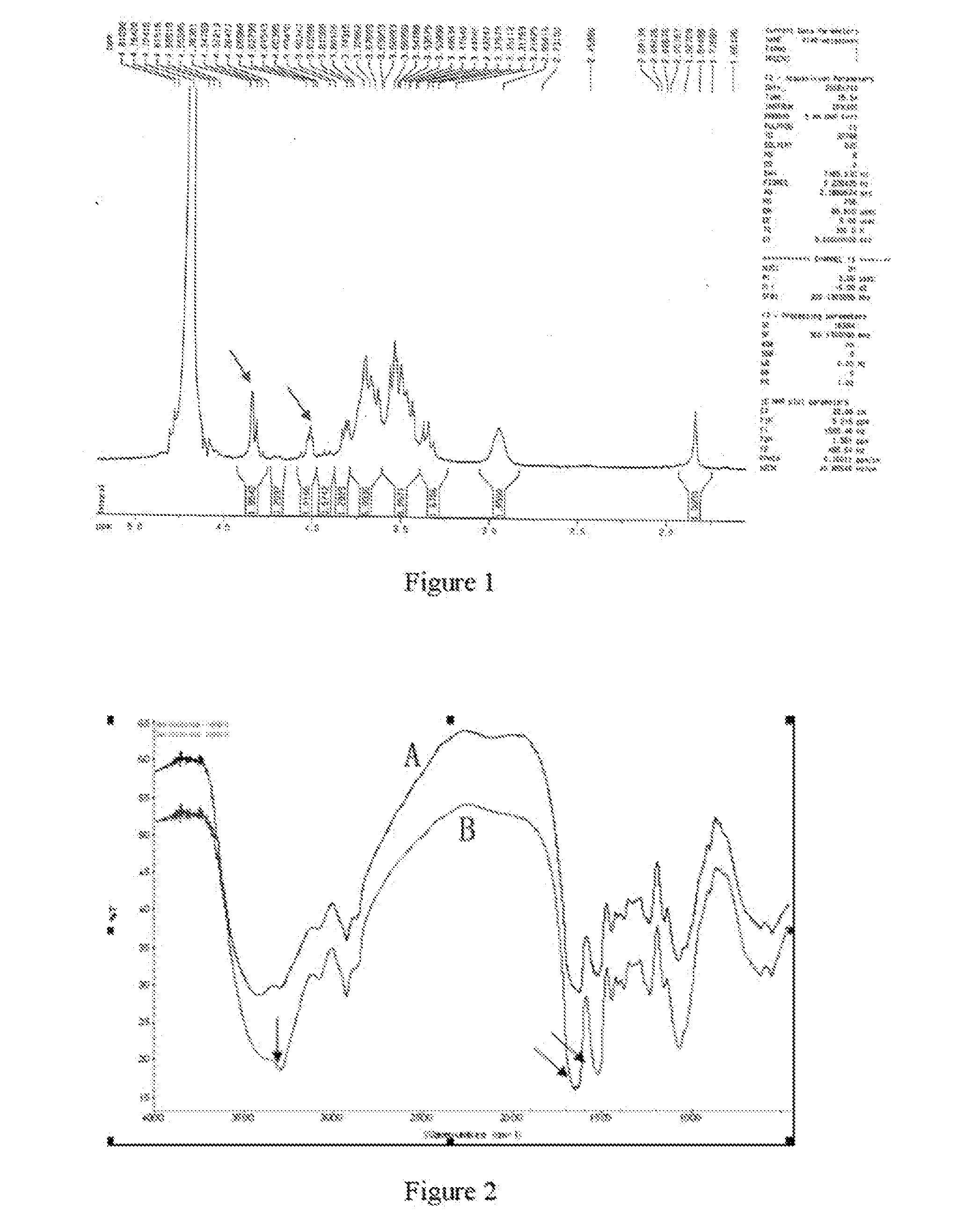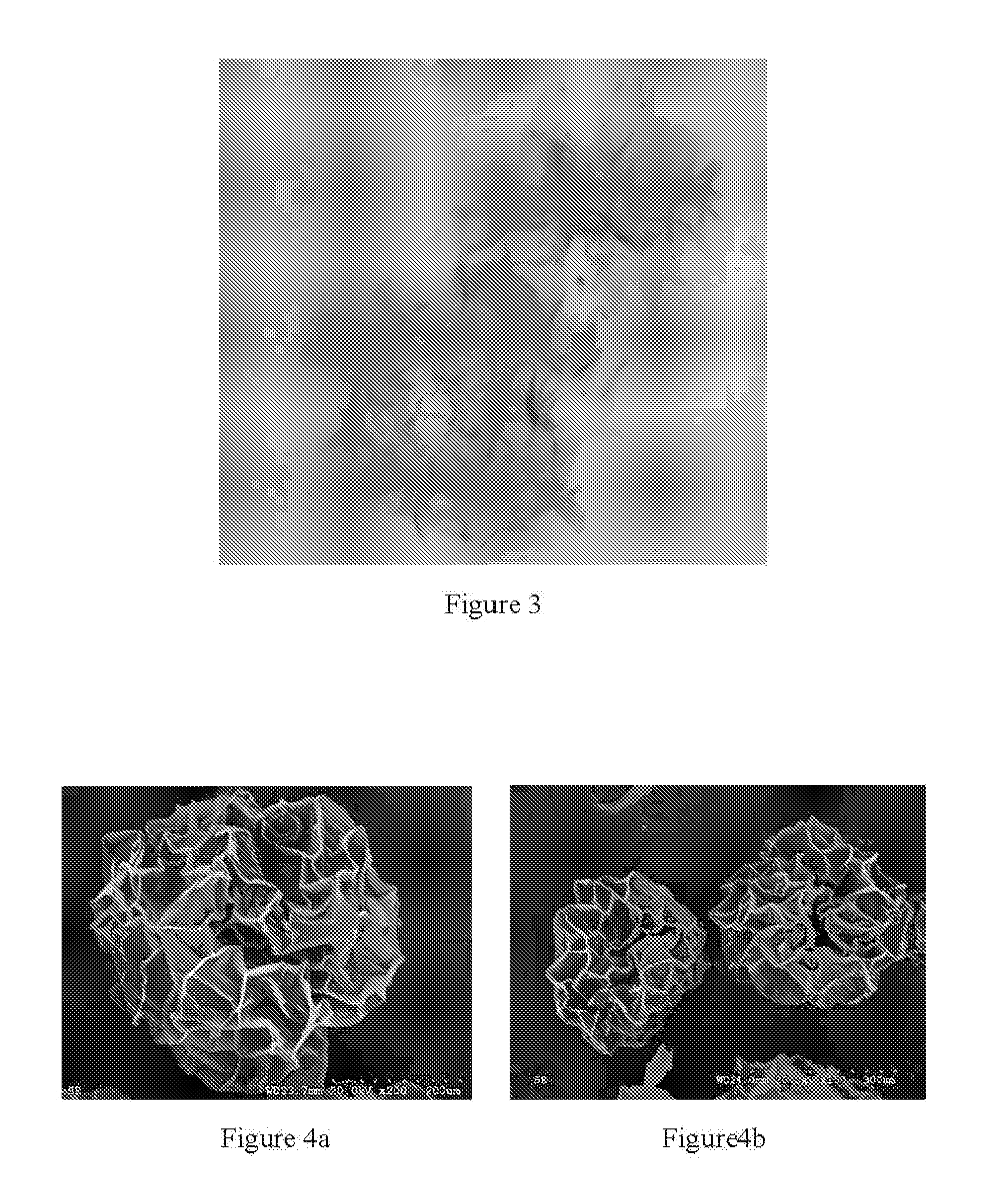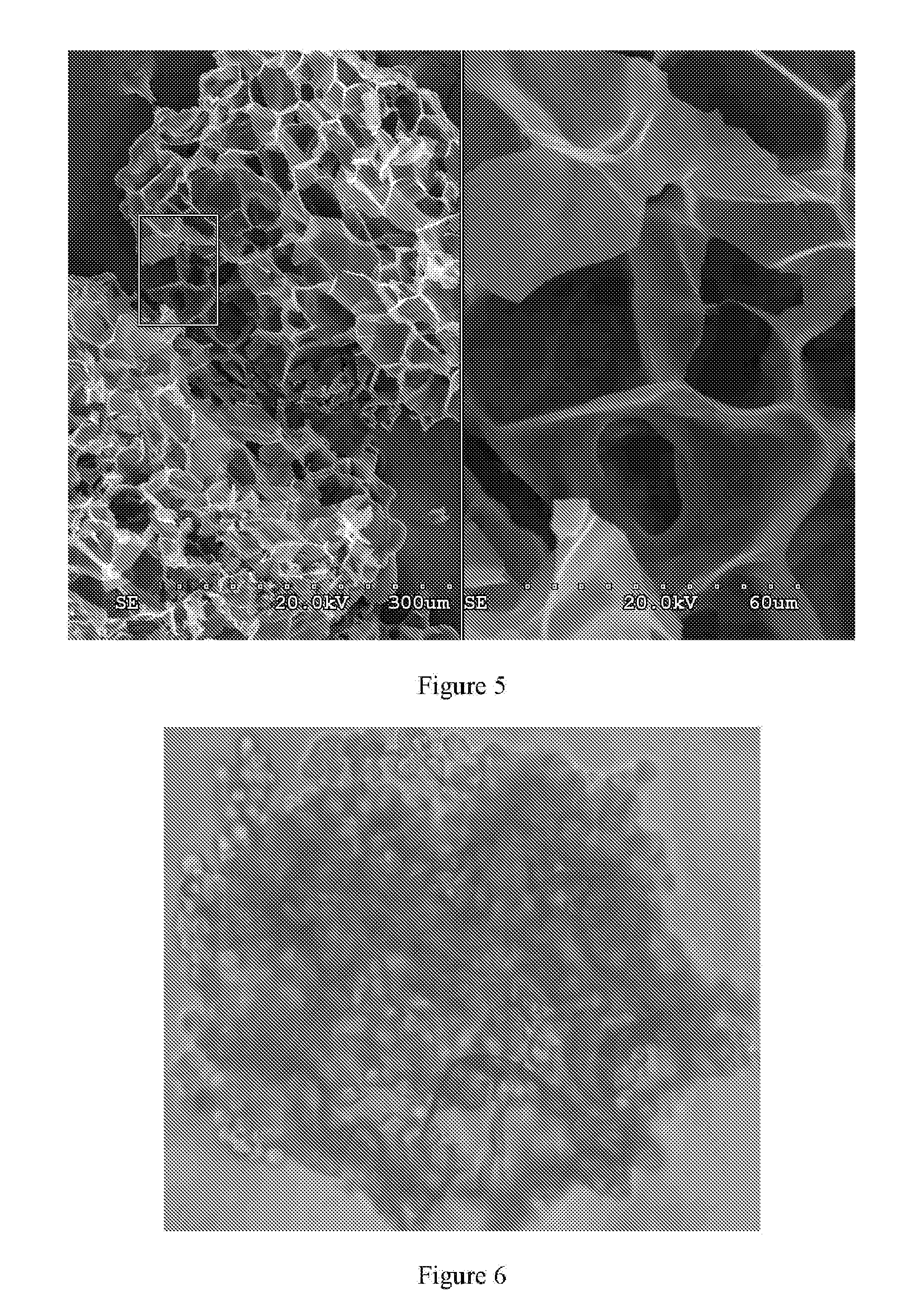Macroporous Microcarrier Specific to Liver Cell, Preparation Method and Use Thereof
- Summary
- Abstract
- Description
- Claims
- Application Information
AI Technical Summary
Benefits of technology
Problems solved by technology
Method used
Image
Examples
first embodiment
The First Embodiment
[0044]A. Silk fibroin preparation: Add 75 g raw silk to a sodium carbonate solution with a concentration of 5 g / L and a volume of 2 L, boil for 0.5 hour and repeat twice; wash with abundant distilled water to remove sericin protein and dry at 60-70 ° C. to obtain silk fibroin; dissolve appropriate amount of silk fibroin in a calcium chloride / water / ethanol (mol ratio=1:8:2) mixed solution at 80±2°C.; dialyse with distilled water for 3 days at room temperature to remove salts and ethanol in the solution; filtrate to remove insoluble impurities, so as to obtain an aqueous solution of silk fibroin; stir at 50-60 rpm and concentrate at 50±2° C. to obtain a silk fibroin solution with a concentration of 7-10 w / v %[0045]B. Galactosylated chitosan (GC) preparation: Take 2.2 g chitosan and dissolve in an acetic acid-water solution with a concentration of 2.0 % and a volume of 30-40 mL; dilute the chitosan solution to a concentration of 4 w / v % with appropriate amount of TE...
second embodiment
The Second Embodiment
[0052]A. Silk fibroin preparation: Add 75 g raw silk to a sodium carbonate solution with a concentration of 5 g / L and a volume of 4 L, boil for 0.5 hour and repeat twice: wash with abundant distilled water to remove sericin protein and dry at 60-70° C. to obtain silk fibroin; dissolve appropriate amount of silk fibroin in a calcium chloride / water / ethanol (mol ratio=1:8:2) mixed solution at 80° C.; dialyse with distilled water for 3 days at room temperature to remove salts, ethanol and other small molecules in the solution; filtrate to remove insoluble impurities, so as to obtain an aqueous solution of silk fibroin; stir at 50-60 rpm and concentrate at 50±2° C. to obtain a silk fibroin solution with a concentration of 7-10 w / v %.[0053]B. Galactosylated chitosan (GC) preparation: Take 1.1 g chitosan and dissolve in an acetic acid-water solution with a concentration of 2.0% and a volume of 15-20 mL; dilute the chitosan solution to a concentration of 4 w / v % with ap...
third embodiment
The Third Embodiment
[0060]A. Silk fibroin preparation: Add 75 g raw silk to a sodium carbonate solution with a concentration of 5 g / L and a volume of 2 L, boil for 0.5 hour and repeat twice; wash with abundant distilled water to remove sericin protein and dry at 60-70° C. to obtain silk fibroin; dissolve appropriate amount of silk fibroin in a calcium chloride / water / ethanol (mol ratio=1:8:2) mixed solution at 80±2° C.; dialyse with distilled water for 3 days at room temperature to remove salts and ethanol in the solution; filtrate to remove insoluble impurities, so as to obtain an aqueous solution of silk fibroin; stir at 50-60 rpm and concentrate at 50±2° C. to obtain a silk fibroin solution with a concentration of 7-10 w / v %.[0061]B. Galactosylated chitosan (GC) preparation: Take 2.2 g chitosan and dissolve in an acetic acid-water solution with a concentration of 2.0% and a volume of 30-40 mL; dilute the chitosan solution to a concentration of 4 w / v % with appropriate amount of TE...
PUM
| Property | Measurement | Unit |
|---|---|---|
| Fraction | aaaaa | aaaaa |
| Fraction | aaaaa | aaaaa |
| Fraction | aaaaa | aaaaa |
Abstract
Description
Claims
Application Information
 Login to View More
Login to View More - R&D
- Intellectual Property
- Life Sciences
- Materials
- Tech Scout
- Unparalleled Data Quality
- Higher Quality Content
- 60% Fewer Hallucinations
Browse by: Latest US Patents, China's latest patents, Technical Efficacy Thesaurus, Application Domain, Technology Topic, Popular Technical Reports.
© 2025 PatSnap. All rights reserved.Legal|Privacy policy|Modern Slavery Act Transparency Statement|Sitemap|About US| Contact US: help@patsnap.com



